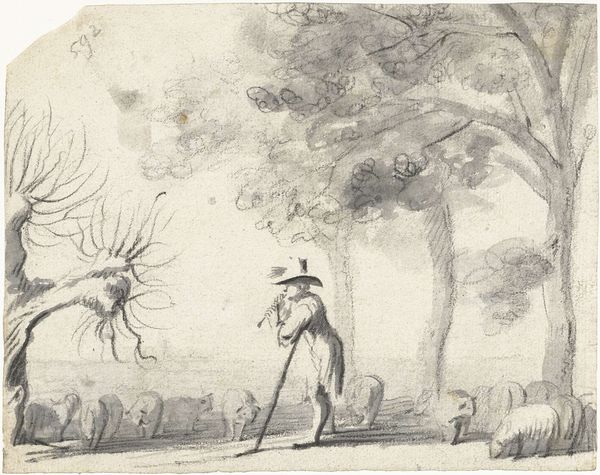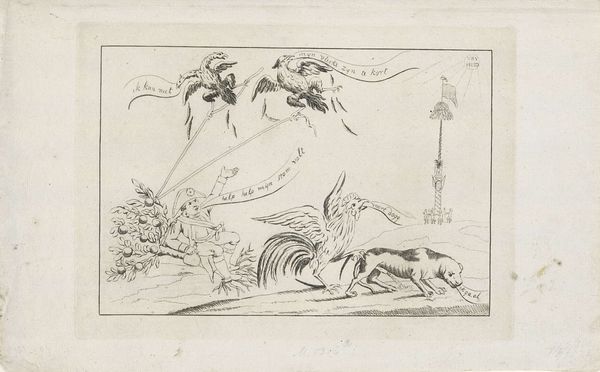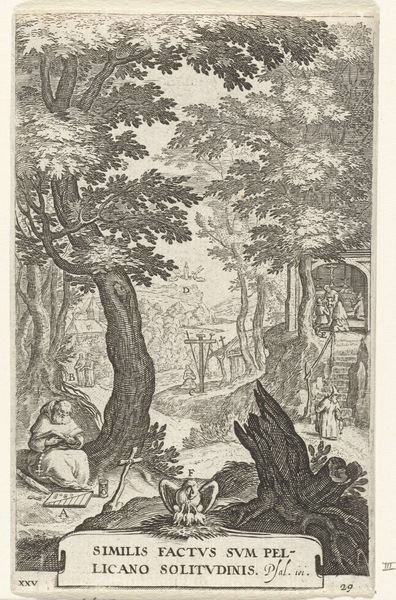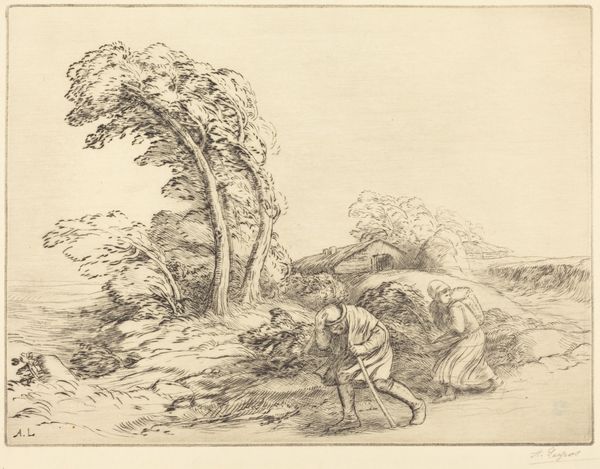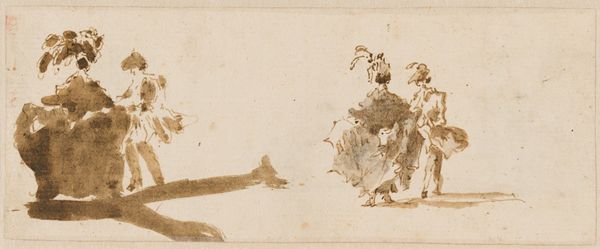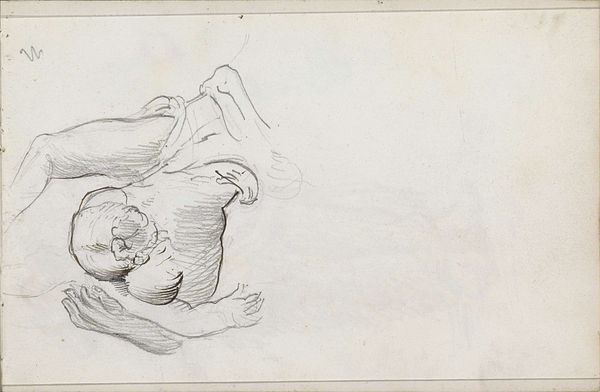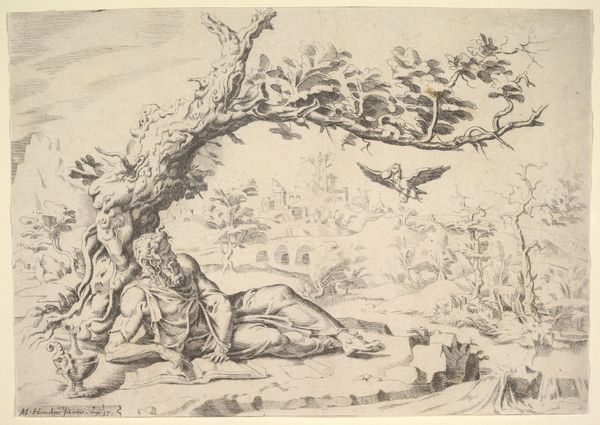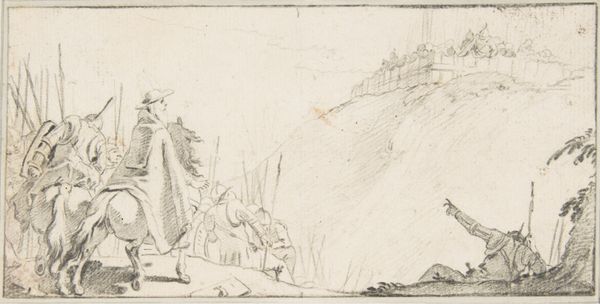
#
quirky sketch
#
pen sketch
#
personal sketchbook
#
idea generation sketch
#
sketchwork
#
ink drawing experimentation
#
pen-ink sketch
#
sketchbook drawing
#
storyboard and sketchbook work
#
sketchbook art
Dimensions: height 165 mm, width 210 mm
Copyright: Rijks Museum: Open Domain
Curator: This is "Three Shepherd Boys with Sheep by Willows," a drawing dating to around 1653 by Harmen ter Borch, currently held in the Rijksmuseum. What are your first thoughts? Editor: Stark. Bleak, almost. The limited use of ink lends a sense of quiet austerity to this rural scene. It feels like an observation, quickly captured. Curator: Ter Borch was fascinated by representing scenes of everyday life. Notice how the willows are sketched in a very specific way. For centuries, the willow has been tied to notions of mourning, adaptability, and even magic. Their presence here gives the seemingly simple subject deeper resonance. Editor: It’s interesting to consider what 'simple' meant then. Ter Borch likely had a sophisticated understanding of ink production; the subtle tonal variations here testify to the processing techniques and possible combinations of oak gall, iron sulfate, and gum arabic used. These weren't tubes readily available at the shop! Curator: Indeed. The choice of subject matter reflects shifts in artistic patronage during the Dutch Golden Age, from religious iconography toward more domestic themes that a burgeoning merchant class might purchase. One could suggest these shepherds signify simpler, purer ways of living in counterpoint to the increasingly complex social stratifications in Dutch society. Editor: I’m curious about the physical process. Ter Borch likely used a quill, perhaps goose or swan, and judging from the evenness of the lines, a well-prepared batch of ink. The cost and effort involved certainly informed what types of imagery became normalized. Art materials are rarely neutral carriers of cultural values. Curator: Very true. Also note that the hats worn by these youthful shepherds perhaps acted as emblems of their social status, and afforded a measure of protection, and might have further symbolic weight beyond simple utility. Headwear has, across eras, denoted specific identities. Editor: The hats definitely stand out. I imagine ter Borch capturing these boys on paper after observing them in the fields, recording details of their labor—the herding, shepherding—documenting rural life with accessible, affordable materials. This places us at the start of the transition where new material conditions allow a proliferation of artists exploring everday existence. Curator: Looking closely allows us to appreciate the work in fresh ways. This unassuming sketch truly illuminates the interconnected realms of symbolism and material circumstance within Dutch society. Editor: It certainly does! We can explore broader questions of production, craft, and even economics through such an understated piece of art.
Comments
No comments
Be the first to comment and join the conversation on the ultimate creative platform.
